Cambodians welcome yet are wary of the new Chinese
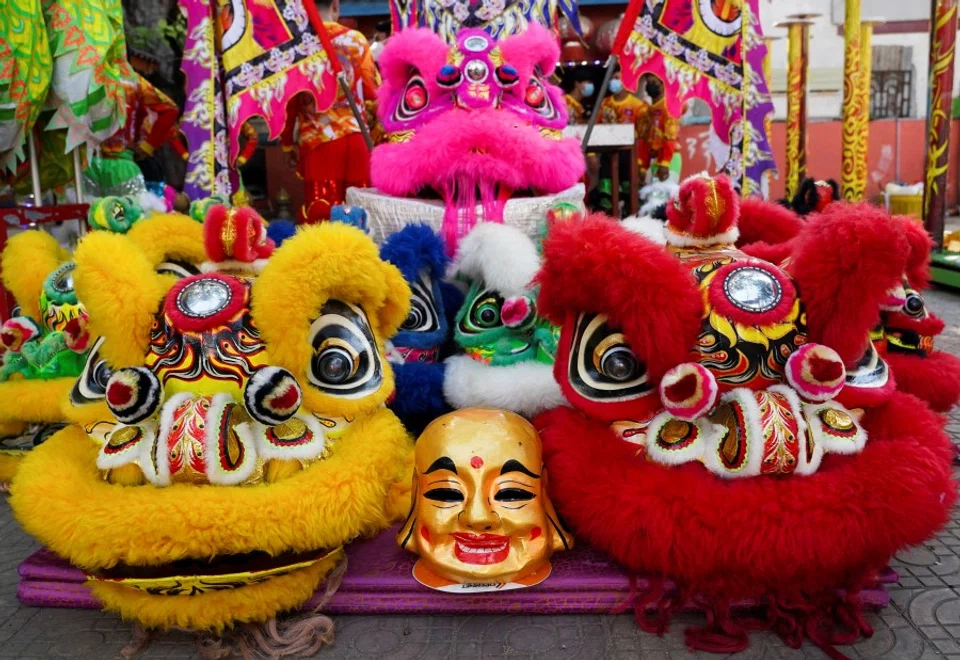
China is Cambodia's top economic partner and donor. Cambodia's economic overdependence on China, and the power asymmetry between the two countries, have enabled China to exert vital political leverage over the Kingdom. The influx of new Chinese migrants to the Kingdom has further enhanced China's socioeconomic and political presence in Cambodia. In addition to migrant socioeconomic networks, it is the close political and economic relations between the two countries which have contributed to the inflow of new Chinese migrants.
The new Chinese, referring to Chinese migrants who arrived and settled in Cambodia after the 1990s (after peace in Cambodia was restored), is an emerging socioeconomic force in Cambodia. The main occupations of the new Chinese include petty traders, service entrepreneurs, skilled garment workers, and white-collar workers in the construction, engineering, financial services, law, media, journalism and education sectors.
There are some news reports about Cambodian reactions to the new Chinese, but no academic study has ever been undertaken on the Cambodian perception of the new Chinese. This article attempts to shed light on the matter by conducting an online survey among residents of Phnom Penh, the capital city of Cambodia. These respondents were from a variety of sectors. However, with only 100 responses received, the survey should be treated as a pilot study.
Since 2010, migrants from mainland China have come to dominate the Chinese community.
Background
Historically, extensive Chinese settlement in Cambodia began in the 15th century, which brought a marked change to the nature of the local economy. After 1400, the Cambodian economy depended more on trade, mainly contributed by the Chinese migrants who gradually formed an entrepreneurial class and an ethnic minority community.
The marketplace became the meeting point for different ethnicities, as economic relations predominated over other aspects of life. The Chinese were in control of almost all internal trade and a substantial portion of the manufacturing sector, including rice milling and transportation, which were so vital to the Cambodian economy.
In the 1990s, Chinese business migrants from Taiwan, Hong Kong and the ASEAN countries played a major role in Cambodia's economy. Since 2010, migrants from mainland China have come to dominate the Chinese community.
Whereas the earlier migrants in the 1900s were from Fujian, these new migrants are mostly from Zhejiang, Sichuan, Hunan and Guangxi, followed by Guangdong, the Northeast (Liaoning, Jilin, and Heilongjiang), Hubei, Henan, Chongqing, Shanghai, Yunnan, Beijing and Fujian.
There is no official record of the number of new Chinese migrants from mainland China, but it is estimated to be around 150,000.
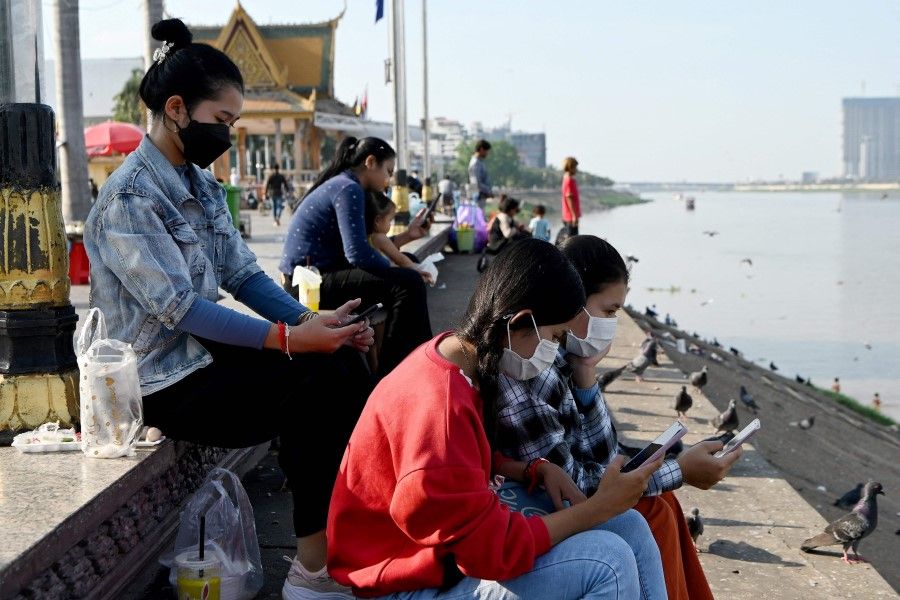
The new Chinese normally have no regional, dialect or occupational identity. Still, their common origins in either mainland China, Taiwan or Hong Kong, and their knowledge of Mandarin or Cantonese are quite distinct from that of the earlier Chinese.
Generally, the new Chinese migrants are more mobile, and possess higher education, specialised skills, and capital than the earlier Chinese.
These migrants are endowed with commercial acumen and entrepreneurial spirit that enable them to adapt to the host society. Most Chinese immigrants initially went to Cambodia on job assignments before deciding to stay and seek new opportunities there. The jobs that brought them were usually related to state-owned enterprises, sub-contractors, textile factories, and Chinese-language schools.
Generally, the new Chinese migrants are more mobile, and possess higher education, specialised skills, and capital than the earlier Chinese. However, tensions between the new migrants and the locals increased due to ethnicity being politicised especially after China implemented a policy called "return to original roots".
Moreover, daily social interactions created a multi-faceted Chinese-ness among various Chinese sub-ethnic groups (sino-Khmer, mainland Chinese, and Taiwanese). These groups adapt to different social statuses to "fit in, adapt, adjust, assimilate, reject, or resist" within the diversified social organisations and networks, and sociopolitical structure.
Academic Shihlun Allen Chen argues that Chinese-ness is a sociopolitical process. The formalisation and legalisation of the Chinese networks with the support of political and economic institutions contribute to expanding business opportunities and personal connections. Being part of these networks helps develop social capital and political protection.
The new Chinese are protected by different networks. Personal relationship formed with government officials, patron-client relations, rent-seeking and crony capitalism are common strategies for their survival and social mobility.
As a result, they have underpinned Cambodia's established politicoeconomic order signified by the economic dominance of ethnic Chinese, the patronage system, and the disparity between the elites and the general population.
The new Chinese prefer to live within their community, without many interactions with Cambodians.

The new Chinese in Cambodia embody slightly different cultural characteristics. They are less integrated into Khmer society than the old Chinese, whose cultural identity integrated well with Khmer culture thanks to inter-ethnic marriages and the fusion of cultural traditions and norms. The new Chinese prefer to live within their community, without many interactions with Cambodians.
Noticeably, the influx of new Chinese in the 2010s - mainly driven by growing investment and tourism - has caused a certain degree of anti-Chinese sentiment among Cambodians due to increased crime rates and the bad behaviour of some Chinese.
Some local Cambodians are not happy with the new Chinese because the economic benefits are not widely shared. Some local analysts have raised concerns over the loss of Cambodian identity and socio-economic issues such as rising inflation, land conflicts, and limited benefits to local people.
More than 90% of the Cambodian respondents perceive that China is the most crucial support in providing vaccines to the region, and about 68% trust Chinese vaccines (Sinopharm, Sinovac).
Survey findings
A random online survey was conducted in February 2022 among residents working and residing in Phnom Penh. The snowball sampling approach was used to approach potential respondents. As a result, 100 responses were received.
The survey comprised 14 questions, which took approximately five minutes to complete. This is a preliminary research project with the aim to set some hypotheses for future research with larger sample and more sophisticated research methodology.
Profile of respondents
The profile of the respondents is as follows: 59% are male, and 41% are female. In terms of age distribution, 42.9% are between 20 and 30 years old, 32.7% are between 30 and 40, and 24.5% are above 40. Regarding the level of education, 52% have an undergraduate degree, 41% have a postgraduate degree, and 7% completed high school. In terms of affiliation, 47% are from the private sector, 29% are from the public sector, 18% are from civil society, and the remaining 6% are self-employed.
In terms of occupations of the new Chinese, 48% of the respondents run their own business, 29% are employed in the private sector, and 20% are self-employed. The survey findings reinforce the general perception that the new Chinese play a dominant economic role in Cambodia.
General perceptions of the new Chinese
The new Chinese are widely positively perceived by the respondents. Remarkably, 39% have a positive view of the new Chinese and 13% have a very positive view. A neutral view of the new Chinese accounts for 38%, and 10% hold an unfavourable view.
Such an overwhelmingly positive perception is perhaps also influenced by the support of China helping Cambodia fight against the Covid-19 pandemic and China's increasing economic and political influence over Phnom Penh.
The new Chinese are considered entrepreneurial and highly involved in economic activities such as trade and investment.
More than 90% of the Cambodian respondents perceive that China is the most crucial support in providing vaccines to the region, and about 68% trust Chinese vaccines (Sinopharm, Sinovac). China is widely perceived as the most influential economic power in the region (84%) and the most influential political and strategic power in the region (75.3%).
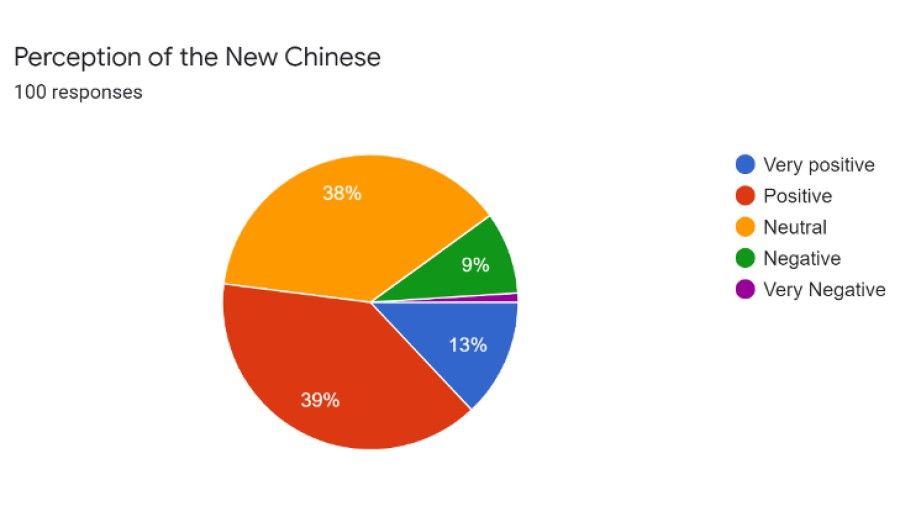
Economic and political influence
As much as 64% of respondents perceive the new Chinese to have strong economic influence and 17% rate it as very high. The new Chinese are considered entrepreneurial and highly involved in economic activities such as trade and investment. The flow of Chinese investment capital and tourists into Cambodia creates vast business opportunities for the new Chinese.
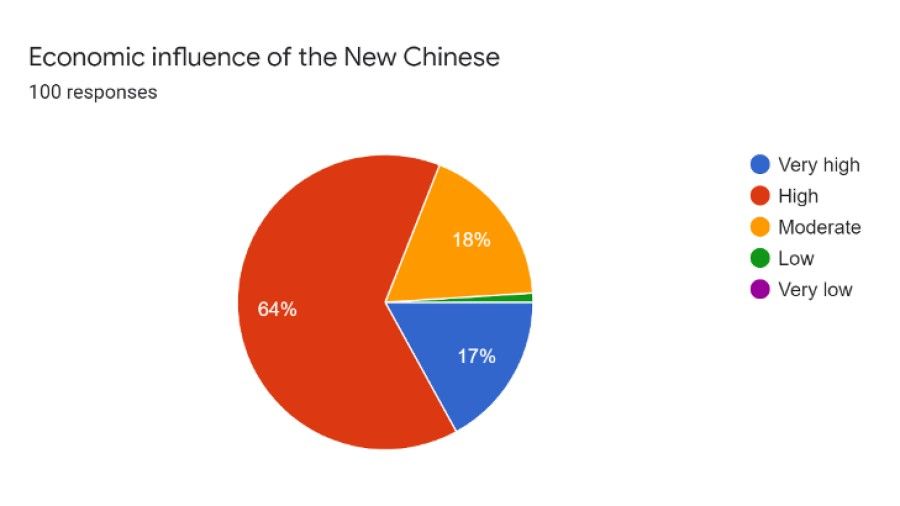
In terms of political influence, the new Chinese are seen to have significant influence, with 38% rating it high and 15% very high, and 43% rating it moderate. The political influence stems from the complex patronage networks between political leaders and business elites.
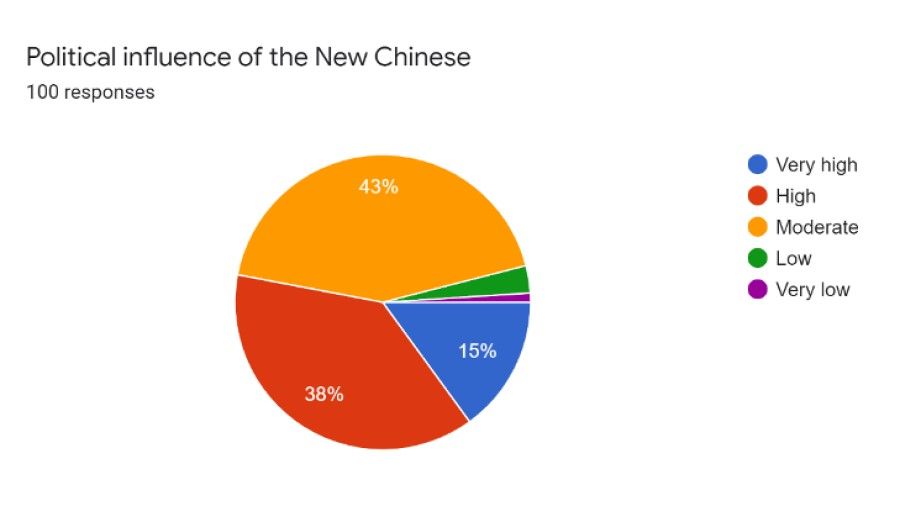
Economic contributions
The economic contributions of the new Chinese are rated high (53%), very high (14%), moderate (25%), low (6%), and very low (2%).
Clearly, the new Chinese are a fundamental economic actor in Cambodia, with some of them functioning as a bridge to connect Cambodia and China by attracting Chinese investors, tourists and donors, and by establishing companies that create job opportunities and incomes for the local people, and sharing entrepreneurship knowledge and skills.

Some local Cambodian entrepreneurs and job seekers feel that they cannot compete with the new Chinese. Other issues relate to inflation (perceived to be partially caused by the new Chinese) and economic crime include money laundering, trafficking and online gambling.
...in some cases, the erroneous usage of Khmer words on signboards stir up public resentment.
Social integration
Although the new Chinese have gained significant influence in Cambodia's economic and political activities, social integration remains a key issue and challenge.
The survey findings illustrate that the level of social integration of the new Chinese is relatively low compared with other perception indicators: 28% rate it as low, 36% rate it moderate, 25% rate it high, 7% rate it very high, and 4% rate it to be very low.
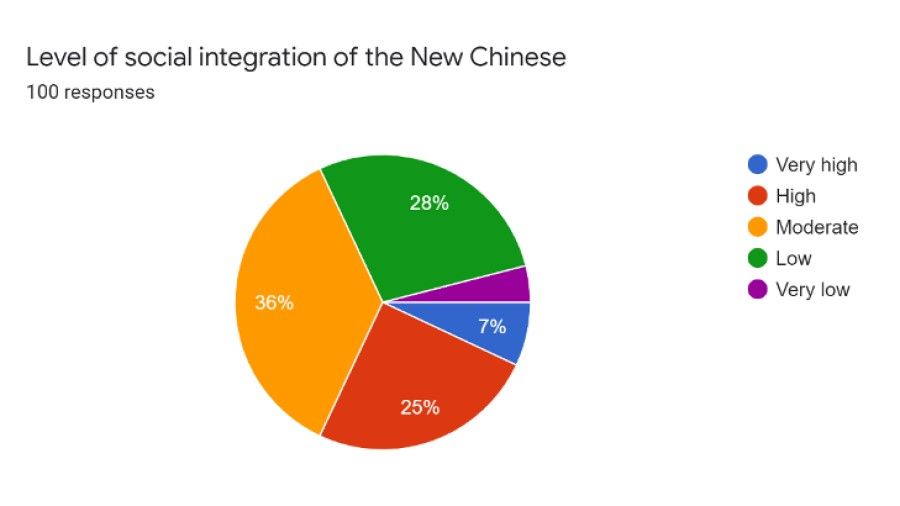
Social tension between Cambodians and the new Chinese is high (45%) and very high (14%) mainly due to the lack of mutual understanding and respect, language barriers and miscommunication, and the bad behaviour of some new Chinese.
Noticeably, the new Chinese, especially those who arrived in Cambodia after 2010, tend to live within their own circles or community, and have little interactions with the locals.
Moreover, the use of the Chinese language on the signboards of businesses owned and/or managed by new Chinese, and in some cases, the erroneous usage of Khmer words on signboards stir up public resentment.
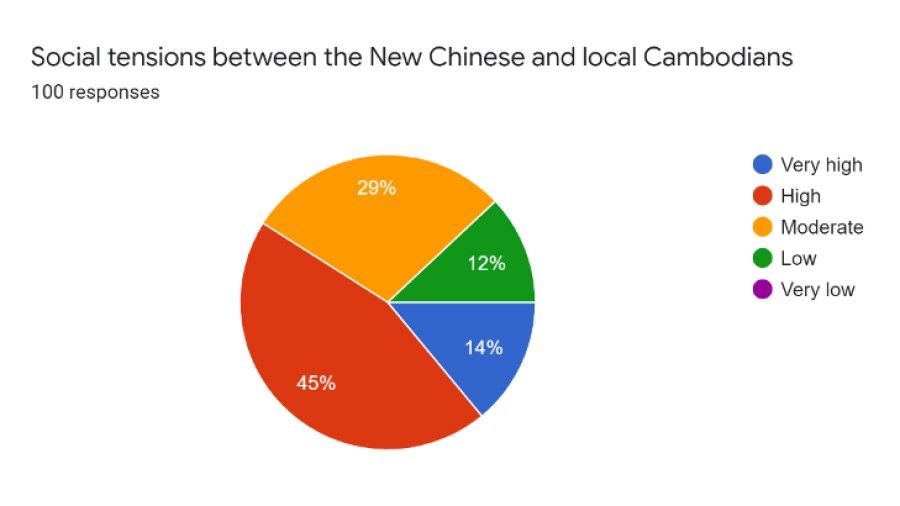
The public has negative views about Chinese involvement in the casino economy. For instance, Chinese gangsters and mafia in Sihanoukville are involved in online scams and human and drug trafficking. These crimes lead to the deterioration of public security and rising negative sentiments towards the new Chinese.
To improve social integration, the respondents suggested that the new Chinese respect local laws and norms (46%), learn the Khmer language (24%), respect local culture and traditions (19%), and live together with Cambodians (10%). Promoting social and cultural exchanges between Cambodians and New Chinese, especially those who arrived in Cambodia after 2010, is critical to reducing social tensions and enhancing social integration.
It is further suggested that the local authorities should enhance the rule of law, good governance (transparency and accountability), raise public awareness among the new Chinese on Cambodian culture and traditions, promote mutual respect and tolerance, and control cross-border crimes. In addition, the companies run by the New Chinese should adhere to social and environmental safeguard measures.
Generally positive public perception
The new Chinese who have worked, done business, and settled down in Cambodia since the 1990s have significantly contributed to the socioeconomic development of Cambodia as well as underpinned the established politico-economic order characterised by the economic dominance of ethnic Chinese and the disparity between the elites and the grassroots.
The findings of this preliminary research illustrate that the public perception of the new Chinese in Cambodia is generally positive, although there are some social tensions and anti-Chinese sentiments. The New Chinese are the dominant economic actor mainly involved in trading, services, and manufacturing, and are a critical force shaping Cambodia's politico-economic order.
The main issue for the New Chinese is social integration as they are already strongly immersed into the Cambodian economy. Language barriers and misunderstanding, lack of mutual respect, and lack of knowledge of local culture and norms are the key issues that need to be addressed. Social tension is expected to rise unless policy interventions are introduced.
This article was first published as ISEAS Perspective 2022/42 "Cambodian Perception of the New Chinese".
